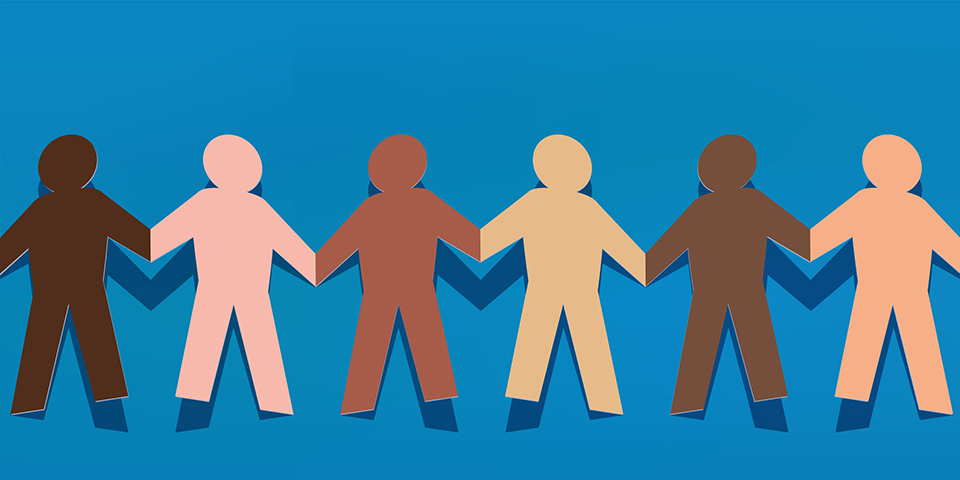CSUN Prof Finds Teachers Reticent to Talk About Racism in American Heartland

CSUN child and adolescent development professor Virginia Huynh and a team of researchers are conducting a study to see how teachers are approaching the subjects of race and inequality with their students, particularly students in kindergarten to eighth grade. Image by Pict Rider, iStock.
The deaths of Breonna Taylor, Ahmaud Arbery, George Floyd and others launched a national conversation about race and racism in America over the past couple of years.
That conversation, coupled with the increasing diversity of communities across America, led California State University, Northridge child and adolescent development professor Virginia Huynh and a team of researchers to begin a study to see how teachers are approaching the subjects of race and inequality with their students, particularly students in kindergarten to eighth grade.
“What we’ve found kind of surprised us,” said Huynh, who teaches in CSUN’s College of Health and Human Development. They studied two schools in Minnesota — one in an urban area near where George Floyd was murdered and one in a rural community. Teachers at both schools are predominantly white, as are their students. The research team surveyed the teachers at the beginning of 2021.

Virginia Huynh
“These schools are in the state where George Floyd was killed last year — a murder that sparked protests across the country, including in their own state, and led to the conviction of a police officer for murder,” she said. “Yet, only the teachers at one of the schools, the one in an urban setting and with a more diverse city population, talked about racism with their students at least once in the past year. At the rural school, they talk about racism even less often.”
The study is part of a bigger research project Huynh and her colleagues—Cari Gillen-O’Neel, a psychology professor at Macalester College, and Taylor Hazelbaker, an assistant professor at The College of St. Scholastica—are conducting on the issue of race and racial equity in schools in Minnesota. The researchers purposely chose Minnesota to get a sense of what people are saying and doing about racism in traditionally white communities in America.
Their first paper from the project — From Kindness and Diversity to Justice and Action: White Parents’ Ethnic-Racial Socialization Goals — was published in March in the Journal of Family Issues, and examined how white parents convey the norms, values and customs regarding ethnicity to their children, a practice called ethnic-racial socialization.
For their study on teachers’ approaches to talking about race and inequality, Huynh and her colleagues chose to survey K-8 teachers “because we were curious to see if teachers, like parents, underestimate a child’s ability to process race and racism.”
Huynh said studies have shown that children as young as 3 months old can identify differences based on skin tone.
“Kids start making associations between race and status and how people are treated much sooner than most people realize,” she said. “The issue then becomes, when do you start talking about racism in a developmentally appropriate way?”
Huynh said the teachers at the urban school, which has a student population that is nearly 60 percent white, said that it was appropriate to start talking about racism with children as young as 3 years old. The teachers at the rural school, with a student population that is more than 80 percent white, said conversations about race shouldn’t start until a child is at least 4 years old.
She said the teachers surveyed were more likely to engage in diversity appreciation, using diverse protagonists in stories, or exposing their students to role models of color. But engagement with race disappeared when they were asked about their approaches to discussions about racial power and privilege, and the implications racism has had on huge segments of American society, including the lives of their students.
“We asked about going beyond a discussion about Martin Luther King Jr., to talking about what is happening today — how these kids see racial injustice and how they deal with it,” Huynh said. “What we saw is that the teachers in the urban school were more willing to talk about those subjects than the rural one. But even then, it was only once in the past year.”
Huynh said the study is ongoing, and she added that she was “surprised, but not surprised” at the teachers’ reticence to talk about race and racism with their students.
“I was surprised because racism plays such a prominent role in the lives of their students, whether students of color or white, and it has dominated national and local conversations,” she said. “On the other hand, teachers have to walk a tightrope. They have to process their own ideas about race and racism in this country, navigate the questions their students have about these issues, and teach what is in the curriculum. They also have to deal with whatever parents’ expectations and demands are right now.”
She pointed to recent parent protests over the misconception that “critical race theory” is taught in elementary schools. Teachers may want to help students understand issues of race and racism — issues that research suggests children notice on their own, but teachers may worry about parental backlash.
“The teachers may personally want to talk about it, but they are held to specific standards of their communities,” she said.
“But the reality is, racism isn’t going to go away just because you don’t want to talk about it,” Huynh continued. “If we are going to confront and deal with issues of racism and privilege, then we need to start talking about those issues at a young age. Yes, mistakes are going to be made. If you want to move past feelings of guilt and shame, if you want to find ways to make amends and move forward together, then we need to have these conversations. What we’re trying to understand is if and how this happens at schools.”

 experience
experience